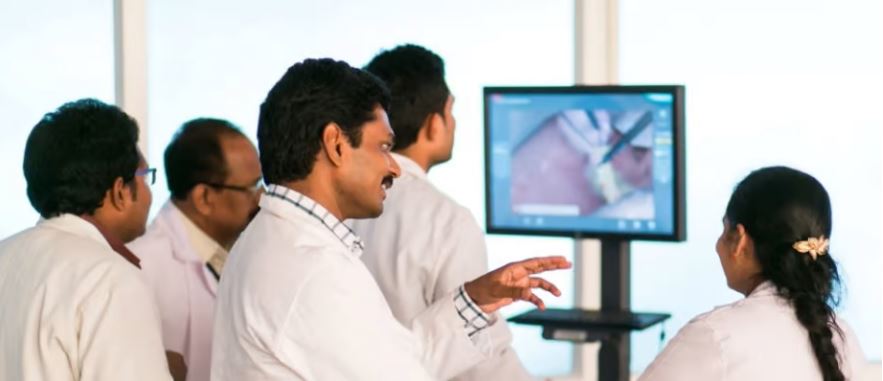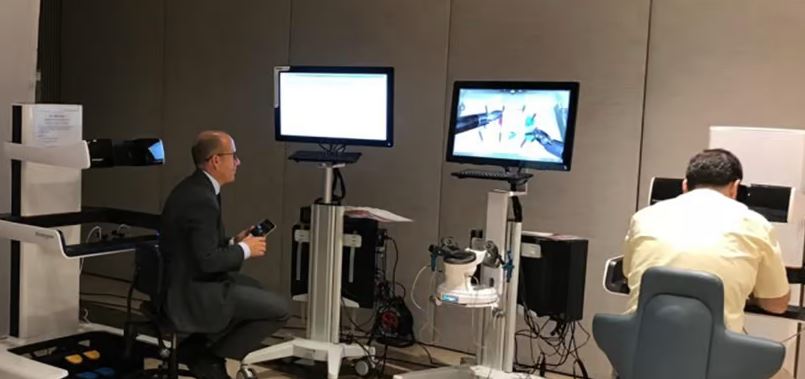Technology Category
- Platform as a Service (PaaS) - Application Development Platforms
- Sensors - Autonomous Driving Sensors
Applicable Industries
- Cement
- Education
Applicable Functions
- Product Research & Development
Use Cases
- Building Automation & Control
- Smart Campus
About The Customer
The primary users of the SOI app are social entrepreneurs and universities. These users are interested in collaborating on ideas that drive global social innovation. The app allows them to explore different social innovation projects, categorize them according to the UN Sustainable Development issue area they address, and show their support for projects they find interesting. The app also plans to allow users to donate to projects they find interesting in the future. The app's partnership with universities globally allows it to leverage their power to support local social innovation at scale through online courses and a built-in social network.
The Challenge
The School of Impact (SOI) was founded by Bobby Smith, a social entrepreneur with a vision to foster global social innovation. The challenge was to create a platform that would allow social entrepreneurs and universities to collaborate on ideas that drive social innovation. The platform needed to be accessible, user-friendly, and capable of supporting a wide range of social innovation projects. Additionally, it was important for the platform to be able to categorize each venture according to the UN Sustainable Development issue area it addresses, and to allow users to show their support for projects they find interesting. The ultimate goal was to create a platform that could leverage the power of universities to support local social innovation at scale.
The Solution
The solution was to build an app using Bubble, a no-code platform known for its accessibility and easy-to-use features. The SOI app functions as a Product Hunt for social innovation, allowing users to explore different social innovation projects happening across the world. Each venture is assigned a UN Sustainable Development issue area, and users can 'Hype' and 'Follow' projects they support. The app also plans to allow users to donate to projects they find interesting in the future. The app partners with universities globally to support local social innovation at scale through online courses and a built-in social network. The app was launched successfully and has already signed its first regional leader in Medellin, Colombia.
Operational Impact
Quantitative Benefit

Case Study missing?
Start adding your own!
Register with your work email and create a new case study profile for your business.
Related Case Studies.

Case Study
System 800xA at Indian Cement Plants
Chettinad Cement recognized that further efficiencies could be achieved in its cement manufacturing process. It looked to investing in comprehensive operational and control technologies to manage and derive productivity and energy efficiency gains from the assets on Line 2, their second plant in India.

Case Study
Revolutionizing Medical Training in India: GSL Smart Lab and the LAP Mentor
The GSL SMART Lab, a collective effort of the GSL College of Medicine and the GSL College of Nursing and Health Science, was facing a challenge in providing superior training to healthcare professionals. As clinical medicine was becoming more focused on patient safety and quality of care, the need for medical simulation to bridge the educational gap between the classroom and the clinical environment was becoming increasingly apparent. Dr. Sandeep Ganni, the director of the GSL SMART Lab, envisioned a world-class surgical and medical training center where physicians and healthcare professionals could learn skills through simulation training. He was looking for different simulators for different specialties to provide both basic and advanced simulation training. For laparoscopic surgery, he was interested in a high fidelity simulator that could provide basic surgical and suturing skills training for international accreditation as well as specific hands-on training in complex laparoscopic procedures for practicing physicians in India.

Case Study
IoT platform Enables Safety Solutions for U.S. School Districts
Designed to alert drivers when schoolchildren are present, especially in low-visibility conditions, school-zone flasher signals are typically updated manually at each school. The switching is based on the school calendar and manually changed when an unexpected early dismissal occurs, as in the case of a weather-event altering the normal schedule. The process to reprogram the flashers requires a significant effort by school district personnel to implement due to the large number of warning flashers installed across an entire school district.

Case Study
Digital Transformation of Atlanta Grout & Tile: An IoT Case Study
Atlanta Grout & Tile, a Tile, Stone & Grout restoration company based in Woodstock, Georgia, was facing challenges with its traditional business model. Despite steady growth over the years, the company was falling behind the web revolution and missing out on the opportunity to tap into a new consumer base. They were using independent software from different vendors for each of their department information and workforce management. This resulted in a lot of manual work on excel and the need to export/import data between different systems. This not only increased overhead costs but also slowed down their response to clients. The company also had to prepare numerous reports manually and lacked access to customer trends for effective business decision-making.

Case Study
Implementing Robotic Surgery Training Simulator for Enhanced Surgical Proficiency
Fundacio Puigvert, a leading European medical center specializing in Urology, Nephrology, and Andrology, faced a significant challenge in training its surgical residents. The institution recognized the need for a more standardized and comprehensive training curriculum, particularly in the area of robotic surgery. The challenge was underscored by two independent studies showing that less than 5% of residents in Italian and German residency programs could perform major or complex procedures by the end of their residency. The institution sought to establish a virtual reality simulation lab that would include endourological, laparoscopic, and robotic platforms. However, they needed a simulator that could replicate both the hardware and software of the robotic Da Vinci console used in the operating room, without being connected to the actual physical console. They also required a system that could provide both basic and advanced simulation training, and a metrics system to assess the proficiency of the trainees before they performed surgical procedures in the operating theater.








